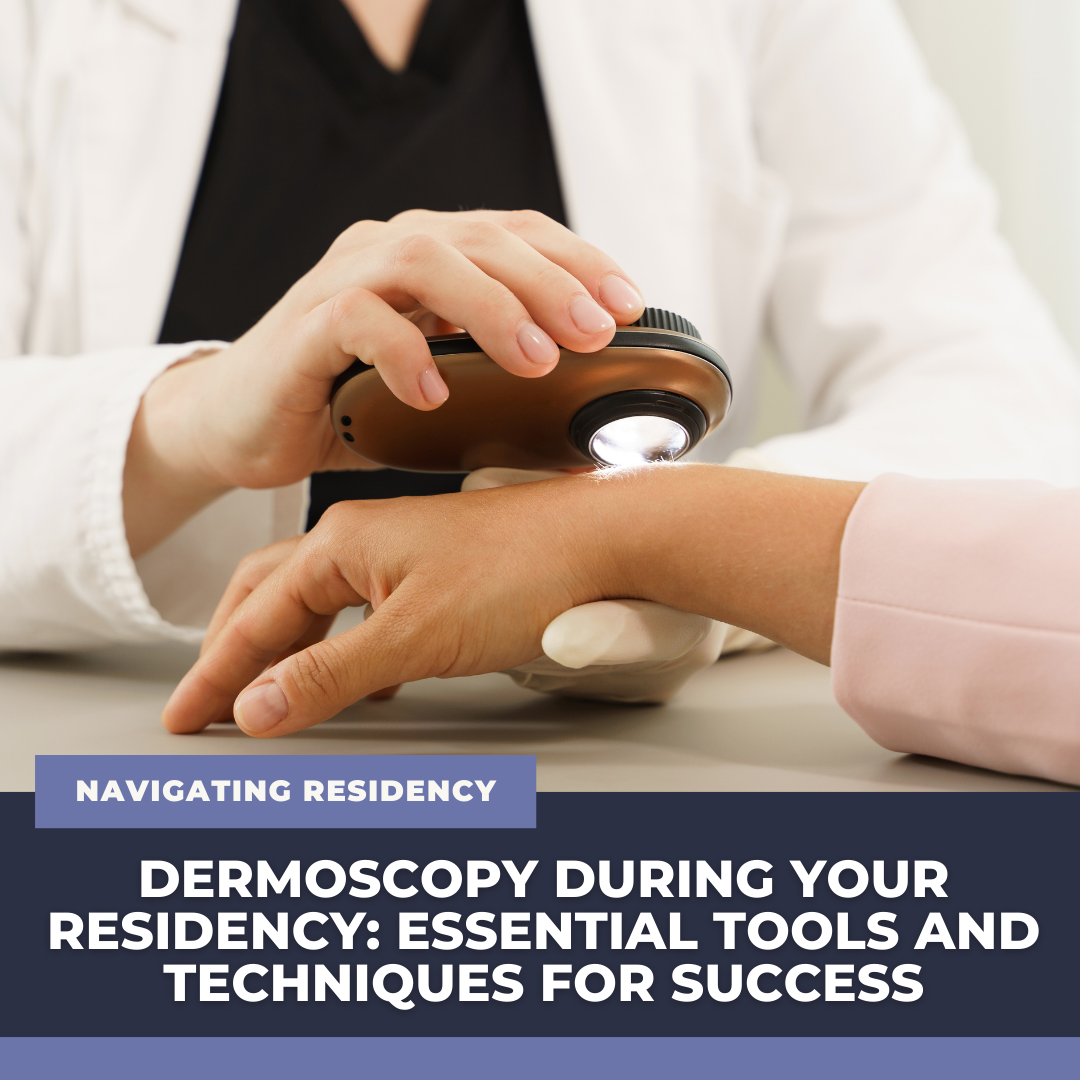Dermoscopy is an essential tool that every dermatology resident should master during training. The dedicated learning time in residency allows you to familiarize yourself with key dermoscopic features, enabling you to make more confident decisions about which lesions to biopsy and which ones to leave alone. Mastering dermoscopy early on will help you avoid unnecessary biopsies, ensuring patient satisfaction and better outcomes.
Thankfully, there are several excellent resources available to help you learn dermoscopy effectively. Below are some valuable tools to guide your education:
Online Resources
-
- Dermoscopy Course and Pigmented Lesions for Dermatology Residents: Dr. Kohen and Dr. Buchanan offer a monthly webinar series that is free for residents. This course covers a wide range of topics, including how to approach pigmented lesions, non-melanoma skin cancers, benign tumors, vascular lesions, acral lesions, nail conditions, and inflammatory diseases. The sessions are recorded and accessible for a period of time, so you can review them at your convenience.
- Dermoscopedia: A dynamic, searchable database, Dermoscopedia allows residents to explore a wide range of dermoscopic findings categorized by lesion type, making it a valuable tool for quick reference and enhancing clinical decision-making.
Recommended Textbooks
-
- Atlas of Dermoscopy by Dr. Ashfaq Marghoob: This essential textbook not only covers key dermoscopic features but also provides a comprehensive introduction to using the dermatoscope itself. With detailed images and explanations, it helps residents build a solid foundation for accurate lesion identification and effective dermoscopy use in clinical practice.
- Dermoscopy: The Essentials by Dr. Peter Soyer: This concise and practical resource introduces the “three-point checklist” approach for evaluating lesions, focusing on asymmetry, atypical networks, and blue-white structures. The book pairs hundreds of dermoscopic images with this checklist, guiding residents through the process of deciding whether to biopsy. This book reinforces your ability to accurately assess lesions and improve biopsy decision-making.
Additional Resources
-
- American Academy of Dermatology (AAD) Boards Fodder Archive: These concise, easy-to-navigate resources are ideal for residents looking for quick reference on a variety of dermoscopy topics. The archive covers key subjects such as dermoscopic structures, how to approach melanonychia and acral pigmented lesions, and an introduction to trichoscopy.
- Instagram: Social media platforms like Instagram also offer opportunities to test your dermoscopy knowledge. Two excellent accounts to follow are @dermoscopy_ and @dermoscopyislit, which regularly post useful tips and images for practice.
- Dermatology In-Review offers a Dermpath Study Tool with hundreds of dermpath images to diagnose.
Incorporating Dermoscopy into Clinical Practice
Incorporating dermoscopy into your daily clinical practice is essential for enhancing your diagnostic skills. You can purchase phone attachments that connect to dermatoscopes from brands like Heine or DermLite, or even find these attachments on platforms like Amazon. These attachments allow you to capture dermoscopic images of lesions. While institutional policies may vary regarding the retention of these images, keeping a personal log of dermoscopic images is highly beneficial. Practice identifying dermoscopic features, use the resources mentioned above to confirm these features, and record a differential diagnosis for each lesion. Once biopsy results are available, compare them with the images and your differential. This process helps track your progress, reinforce learning, and deepen your understanding of dermoscopy.
Mastering dermoscopy during residency is a crucial step toward becoming a skilled and confident dermatologist. By utilizing the resources available, practicing daily, and consistently reviewing images and biopsy outcomes, you will enhance your ability to make accurate clinical decisions. Dermoscopy not only aids in identifying lesions that require biopsy but also helps in avoiding unnecessary procedures, ultimately improving patient care. Keep practicing, stay consistent with your learning, and allow dermoscopy to become an integral part of your diagnostic toolkit.
Did you enjoy this article? You can find more on Navigating Residency here.

